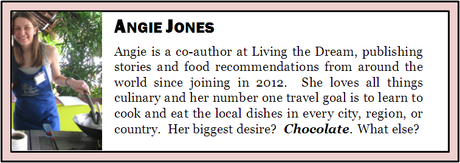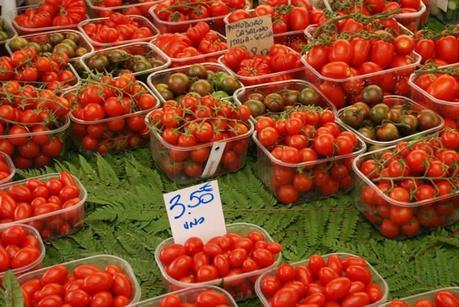 In much of the world, food vendors and their regular customers have camaraderie and rich relationships. The fishmonger will steer you towards the snapper rather than the sea bream because it’s fresher, or throw in an extra tomato or two onto your pile because you’ve been buying tomatoes from him for years. Obviously, when you’re traveling to a new destination on your own, you’re starting from scratch. You don’t have these types of relationships with the butcher or the baker; you’re on your own.
In much of the world, food vendors and their regular customers have camaraderie and rich relationships. The fishmonger will steer you towards the snapper rather than the sea bream because it’s fresher, or throw in an extra tomato or two onto your pile because you’ve been buying tomatoes from him for years. Obviously, when you’re traveling to a new destination on your own, you’re starting from scratch. You don’t have these types of relationships with the butcher or the baker; you’re on your own.For this reason, sometimes it can be helpful to take a guided tour with a local expert. Someone who knows to visit this café instead of that one, someone who knows the cheese monger who will tell you when the burrata mozzarella just isn’t quite right today and to try the smoked mozzarella instead. On our recent trip to Rome, we got to take advantage of the knowledge of a local expert as we went on a Rome food tour with Walks of Italy.
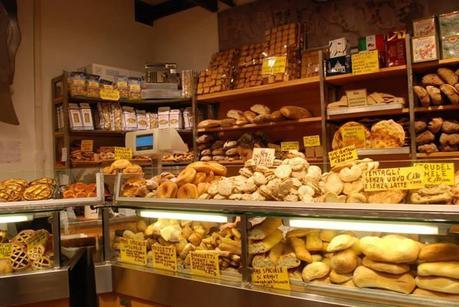
Our tour started in Campo de’ Fiori, the location of a daily market where you can find fresh local fruits and vegetables, olive oils, vinegars, and other Italian food products. Our first food stop was at Forno Roscioli, where we got to try pizza bianca, a common breakfast and snack. The texture kind of reminded me of focaccia style bread with olive oil and salt drizzled on top. After coming to Rome from Tuscany, where none of the bread contains salt, pizza bianca was heaven.

Next we went to a stand in the Campo de’ Fiori market where we tasted balsamic vinegars, olive oils, and crostini spreads. We learned about the two different methods for producing balsamic vinegars and got to taste the differences in the end products. The first method involves pressing grapes then cooking the liquid to reduce the volume, after which the liquid is aged in barrels. As the liquid gradually evaporates over the years and the flavors are concentrated, the vinegar is transferred to sequentially smaller barrels. The second method for vinegar production is similar to making wine in that the grapes are pressed, fermented, then aged in barrels. To me, vinegars produced with the first method tasted fruitier while the vinegars produced with the second method had more of a bite that evened out as they aged.

Of course, any kind of food tasting in Italy wouldn’t be complete without sampling charcuterie and cheeses. For the former we headed to Norcineria Viola in Campo de’ Fiori, which specializes in only pork charcuterie products. My favorite taste here was the salami seasoned with fennel- an unexpected and pleasant, bright flavor that played well with the salty meat. For the cheese tasting we headed to a cheese monger also in the campo and tried an array of tasty Italian specialties, including my favorite, the buffalo mozzarella. I can honestly say I’ve never had any mozzarella so delicious! It had a slightly chewy texture, not soft and mushy like the fresh mozzarella in the U.S., and when you bit into it, it oozed the delicious buffalo milk. Yum!
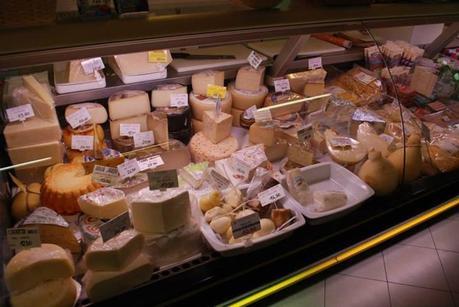
Next we ducked into the famous Sant’Eustachio for some espresso. It’s fairly common in Rome for sugar to automatically be added to coffee before it is served to you. Even though I don’t ever take sugar in my coffee, I decided to try the traditional style (when in Rome…). The espresso was good and had a nice thick crema on top- so much that I had to use my spoon to dig it all out after I was finished.
Our final stop was the one I was most anticipating: a pizza making class!
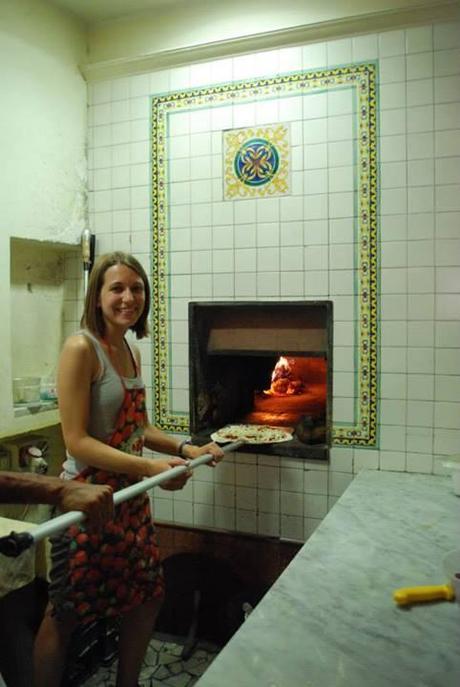
We were taught how to roll out the dough and add the fresh tomato sauce. Jeremy and I are used to cooking down our sauce when we make pizzas at home, but in Italy when you have such lovely tomatoes, it makes sense to let that beautiful raw tomato flavor shine through. We loaded up our pizzas with the toppings of our choice (I did eggplant, bell peppers, and mushrooms), then got to help load them into the wood-burning oven. Seeing as it was lunch time and the oven wasn’t at its peak temperature yet, the crust didn’t have quite as much char and crispness as I was used to, but it was still tasty. I would have loved to see a demo of how the dough and the sauce were made or to make it ourselves, but given the time constraints of the class that wasn’t practical (the pizza dough needs to rise 8-10 hours before being used!). We were so stuffed from the tour that we barely ate half of our pizzas, but we got to take the leftovers with us.
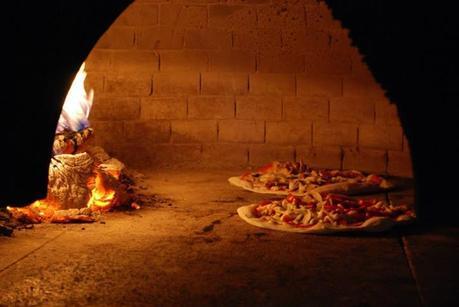
Best leftover pizza ever? You know it.
Overall, the eating tour of Rome was one of the highlights of our stay in the city. How can you say no to exploring a traditional market, eating local foods, and making your own pizza all in the same morning? Just be sure to go with an empty stomach, because after this particular tour you will not want to eat for the rest of the day; aside from your leftover pizza as a late night snack.
We'd like to thank Walks of Italy for inviting us to try out their Rome food tour! This 3-hour tour pairs small groups of less than 12 (we were the only two) with a knowledgeable guide that shares the food history of Rome in incredibly focused detail. Much like all of the other Walks of Italy food tours we took, we were completely stuffed by the end of it. As always, all opinions in the above article are our own.
